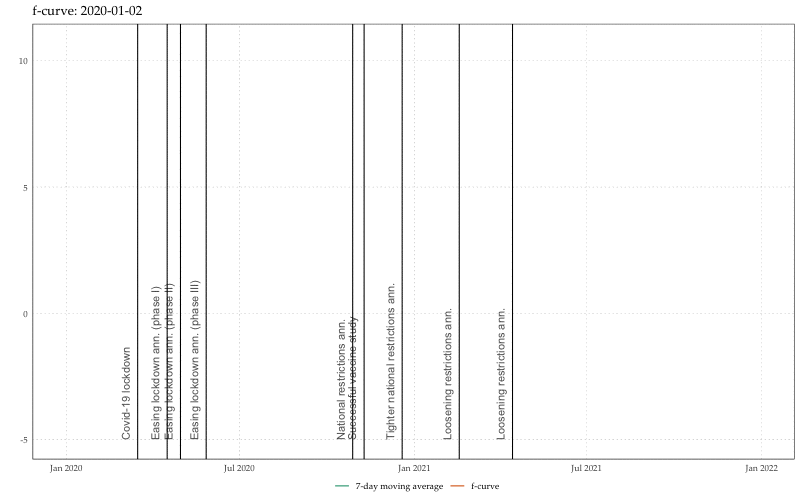
In normal times, monthly and quarterly economic data provide sufficient information on the state of the economy for policy decisions. In times of economic stress as in the Covid-19 pandemic, however, the state of the economy changes almost daily. Nevertheless, policy makers, firms, and consumers have to make decisions and therefore need high-frequency information on the state of the economy to respond to the rapidly changing economic environment.
To provide policy makers with accurate high-frequency information, we have developed a daily indicator to measure the fever of the Swiss economy (f-curve), which we update on a daily basis. The indicator solves the problem outlined above in the way that we rely on data that is easy to obtain at low cost and straightforward to update daily. We include freely available financial market data and a daily evaluation of free internet abstracts from three Swiss German newspapers. Check it out on
github.
[
Data ] [
GitHub ] [
Web Application ]
Producer prices in Switzerland are lagged. On the one hand, price surveys of companies are not for all categories conducted every month. If no survey is conducted in a given month, the value of the previous month is adopted. On the other hand, there are sectors where surveys are conducted in the first quarter of the year, for example, but the results are only included in the index one month later. Under the (plausible) assumption that prices are rigid and basically do not change very quickly, this procedure works quite well. However, there are always events that cause prices to change quickly. For example, when the Swiss National Bank abolished the minimum exchange rate against the euro and the Swiss franc appreciated strongly. Also currently the strong increase in oil prices caused by the Covid-19 crisis on the one hand and the Ukraine war on the other hand might lead to quicker than normal changes of prices. In such situations, the approach of the FSO has the consequence that the PPI reflects the actual price development with a delay. Here, I present a framework to overcome these problems and calculate a more timely PPI. The code for the calculations and regularly updated data can be found on github.

